Obsidian - Volcanic Glass
Obsidian is natural volcanic glass that forms from highly explosive eruptions. Glass cools so quickly that it doesn’t have time for crystals to form, although in some instances some minor amounts of crystals may be seen. Although obsidian is usually associated with highly explosive volcanoes, which normally produce light colored rocks that are very porous (like pumice), obsidian is typically dark colored – most often black. There are several varieties of obsidian:
Black obsidian: Typical obsidian is black. However, when cut thin, as in slabs used for cabochons, it is often translucent.
Midnight Lace Double flow obsidian: Obsidian is the result of molten glass flowing down the side of the volcano. Occasionally, swirled patterns of different colors, such as black and white, may be seen. This is called midnight lace obsidian. It may be the result of two different flows with different compositions, which were laid on top of each other. Then, the layers slipped down the side of the volcano while still hot and were swirled together. Midnight lace obsidian is found in Armenia and a small deposit in Oregon.
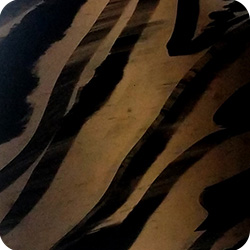
Mahogany: A common form of obsidian has black and reddish-brown color in it. This reddish brown is called mahogany obsidian.
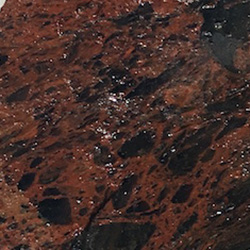
Snowflake and fireworks obsidian: Because volcanic glass is slightly unstable, sometimes it will start to crystallize over time. This crystallization is not uniform, but rather forms at nucleation points. This produces small snowflake or starburst patterns, creating snowflake obsidian or fireworks obsidian.
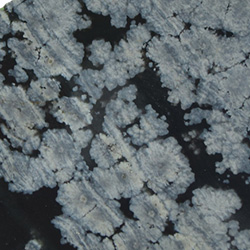

Rainbow obsidian: Rainbow obsidian is an iridescent combination of multiple colors of glass.
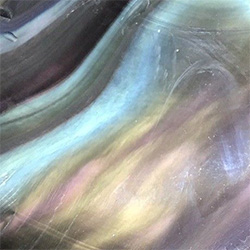
Sheen: Sheen obsidian has small inclusions of metals that cause an iridescent sheen on the surface. There are different types of sheen – gold, silver and fire (with hematite inclusions) are popular.
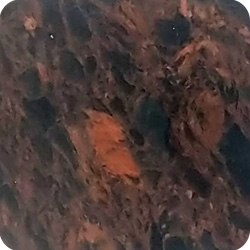
Obsidian can be a little difficult to work with. It has conchoidal fracture, which is a curved fracture pattern, and as such it is commonly seen as a stone used in making arrowheads and spears. This also means that it can chip relatively easily, so it is advised to use caution when cutting this stone. Also remember, it is glass, and small shards of it can end up in the skin f you are not careful.
